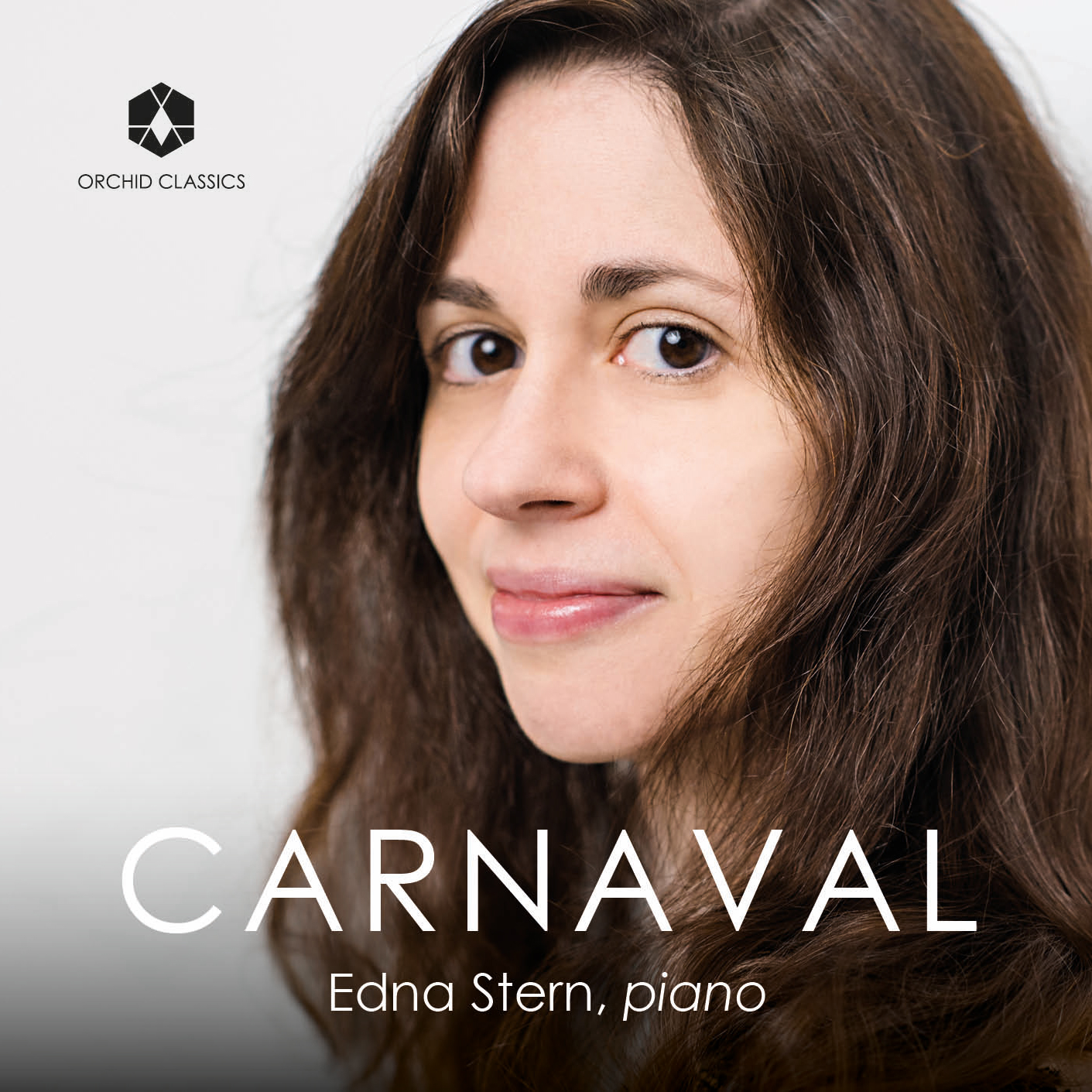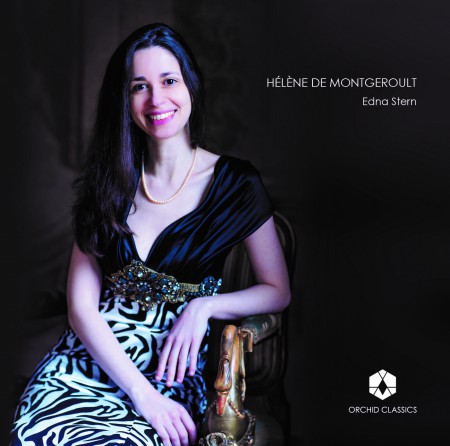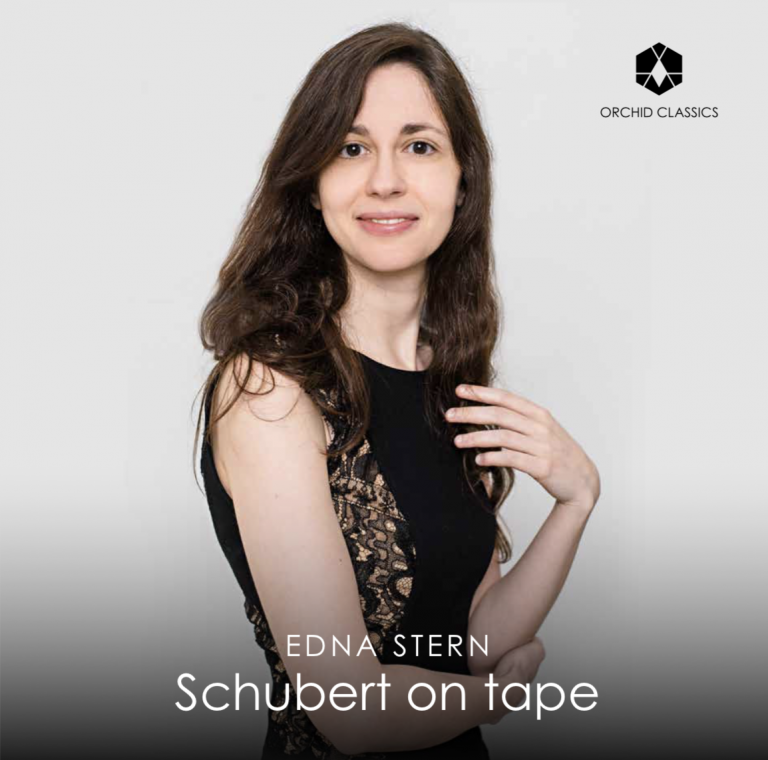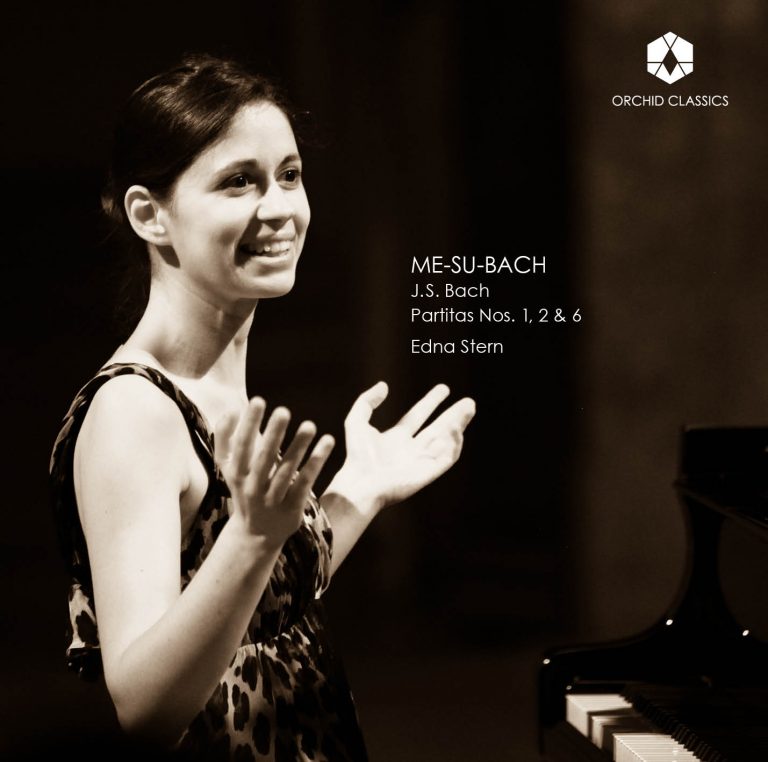Artist Led, Creatively Driven

CARNAVAL
Edna Stern, piano
Release Date: Oct 18th
ORC100338
CARNAVAL
Robert Schumann (1810-1856)
Carnaval, Op.9
1. Préambule
2. Pierrot
3. Arlequin
4. Valse Noble
5. Eusebius
6. Florestan
7. Coquette
8. Réplique
9. Papillons
10. A.S.C.H – S.C.H.A. Lettres Dansantes
11. Chiarina
12. Chopin
13. Estrella
14. Reconnaissance
15. Pantalon et Colombine
16. Valse Allemande – Paganini
17. Aveu
18. Promenade
19. Pause
20. Marche des “Davidsbündler”contre les philistins
Intermezzo from the Faschingsschwank aus Wien, Op.26
21. Mit gösster Energie
Kinderszenen – Scenes of childhood, Op.15
22. Vom fremden Ländern und Menschen
23. Kuriose Geschichte
24. Hasche-Mann
25. Bittendes Kind
26. Glückes genug
27. Wichtige Begebenheit
28. Traumerei
29. Am Kamin
30. Ritter vom Steckenpferd
31. Fast zu ernst
32. Fürchtenmachen
33. Kind im Einschlummern
34. Der Dichter spricht
Edna Stern (1977 -)
35. To-nal or not to-nal, Op.1
Edna Stern, piano
Robert Schumann was captivated by music and literature from a very young age. By the time he was sixteen he had already written two novels and was performing his own compositions. Although he went on to study law, his path kept leading him back to music. As he put it in a letter to his mother, “My whole life has been a struggle between Poetry and Prose, or call it Music and Law.”
His Carnaval Op. 9 was composed in 1834, the same year that he launched his New Journal for Music. In this journal, he published critical essays on music written from the perspective of a fictional music society called ‘David’s League’ (Davidsbündler) – reference to the biblical David – a poet and musician who fought the Philistines. In his journal Schumann also campaigned to revive interest in major composers like Mozart, Schubert and Beethoven, while attacking the popular taste for flashy technical displays and the fashionable but inferior composers of his time whom he referred to as Philistines. He created imaginary characters in his essays that served as devices to discuss the contemporary musical scene and signed each under these characters’ names rather than his own. For example, Florestan, who was known for expressing his passionate and strong opinions, Eusebius, the dreamy one, or sometimes as Master Raro who represented Schumann’s piano teacher, Friedrich Wieck, Clara Wieck’s father, whose name included parts of ClaRa and Robert’s names.
Carnaval is constructed of twenty miniature pieces. It portrays characters from Schumann’s different selves, Eusebius and Florestan, others from the Comedia del’Arte, such as Pierrot, Arlequin, Pantalon and Columbine, and the two real life contemporary musicians he admired, Chopin and Paganini. It also features the two women in his life, Estrella, who was Ernestine Von Fricken, his first fiancée. And most importantly, Chiarina, Clara Wieck, his wife to be, who is literally at the heart of the piece, and is represented in the eleventh piece of this cycle.
These characters are all bound together in this monumental piano cycle, interacting with each other in a fantastic and wonderful masked ball. They meet during dances (Valse Noble, Valse Allemande), they sometimes recognize each other despite their disguises (Reconnaissance), and the story, like all good stories, leads us towards a love declaration at the end (Aveu)*, followed by a walk (Promenade) towards the piece’s grand Finale, Davidbündler’s March against the Philistines, in which our hero conquers all.
The element of disguise is also expressed through the piano, the multi-faceted instrument. Schumann sees the piano as an instrument taking the role of a whole orchestra, an instrument whose voice is made of many voices, and most importantly, an instrument whose power is in its many possibilities of disguising itself into various instruments. Carnaval portrays not just many characters in different disguises, all in a way representing Schumann; it also stands as a piano disguised into many different instruments.
Schumann held a special fascination with masked balls and had composed three years earlier his Papillons Op. 2, a cycle of twelve miniature pieces that make reference to a masked ball taking place in the last part of Jean-Paul’s** novel “The awkward years”. In Carnaval he quotes two themes from his Papillons Op.2: the opening Papillons Theme makes its appearance in Florestan, and in the final March of Davidbündler he uses the “Grandfather’s dance” — which is also the final theme in Papillons. This last theme is mentioned in the Carnaval score as an “18th century tune” and was traditionally played in weddings. It also bears a striking resemblance to Beethoven’s theme from his ninth symphony the “Ode to Joy”.
His fascination with finding parallels between words and music, letters and notes, manifests itself in the Carnaval’s structure, wholly built on an ingenious musical cryptogram, made of four notes that keep repeating in all the pieces.***
The letters stand as four letters taken from his name and the four letters of the city of Asch — birthplace of Estrella, Ernestine von Fricken. This musical cryptogram is always present, but it is nevertheless not apparent to all, as it is most often disguised, almost invisible to the unsuspecting ear.
Schumann’s Kinderszenen- Scenes of childhood, were written in 1838, and were not a description of his own children’s life, but rather inspired by his own daydream and recollections. It is said that these miniature pieces were inspired by Clara’s comment that he sometimes seemed like a child.
It is while reading a passage written by Schumann in his journal, that I got the idea to compose. Schumann believed that any pianist should put aside two of his ten fingers, and use them for the purpose of composing.
Living in the 21st century, I was faced with the dilemma of whether to compose in tonal or atonal musical language. The title refers indeed to this existential question. The piece is composed of five movements of two minutes each. Every movement revolves around a question or an idea inspired by a literary quote:
1. To-nal or not to-nal: that is the question
2. “More than the taste, more than the light, more than the feeling of touch, more than the most passionate emotion and the exaltation of the soul arising from the purest reasons, it is the sound, the acoustic vibration, that makes one aware of the taste, of the light, and of the presence of the most sublime passions.” Antonin Artaud
3. “The song of an instant before disappearing into nothingness.” Walter Benjamin on Angelus Novus
4. “Tender as I am towards all the dead… I thus walk from age to age.” Jules Michelet
5. “Everything dies because the world is burning, uncertain, undecided between the good and the evil.” Antonin Artaud
*Despite the presence of Estrella in the piece, the love declaration is more probably destined to Clara Wieck who was fifteen in 1835, when Schumann finished his Carnaval, and to whom Schumann confessed his love in December 1835, to the great dismay of Clara’s father who prohibited any further exchanges between the two.
**Jean-Paul Richter was Schumann’s favorite author.
***Originally, the piece was conceived as a Theme and variations around these four notes.
Edna Stern
Edna Stern
Piano
Edna Stern is an artist with a reputation as an interpreter who does not shrink from taking strong and unconventional stands and at the same time respectful of the historical tradition of interpretation and the heritage of her own teachers, among them, Leon Fleisher and Krystian Zimerman.
She is a concert pianist and piano professor at the Royal College of Music of London. Edna Stern has performed as soloist in prestigious halls and orchestras from the Paris Philharmonie to New York’s Lincoln Center and the Concertgebouw of Amsterdam. Her recordings are highly praised by critics, receiving such awards as Diapason d’Or, Diapason Découverte, Arte Best CD, Gramophone upcoming artist, and Sélection Le Monde. Her Montgeroult recording, released by Orchid Classics received a Critic’s Choice of the Year 2017 of the Gramophone Magazine and Choice of France Musique. She performed as soloist with conductors such as Claus Peter Flor and Andris Nelsons, and has had chamber music collaborations with the Ebène and Modigliani quartets, as well as violinists Amandine Beyer and Daniel Lozakovich.
Edna Stern is always in search of combining various genres and disciplines and has collaborated in past years with theater/film director Amos Gitaï as well as Etoile/Leading principal dancer from the Paris Opera, Agnès Letestu.
Sharing and communicating with her public and especially transmitting to the younger generation her passion and knowledge of music, became an essential component of her practice. She has published her first book “Interpreting and understanding piano music: Bach’s Well Tempered Clavier” and has created, with children’s poet Tatiana Svetlova, a multimedia show inspired by Schumann’s Carnaval, aiming to initiate children from all ages to Schumann’s musical world. Her compositions are published by Musica Mundana, Musikverlag GmbH.









